How passionate is Joseph Morgan, MD, about hands?
“One of my favorite analogies,” Dr. Morgan, associate professor of orthopaedic surgery and rehabilitation, said as he excitedly gestured at an X-ray, “is that the hand is the ‘tool of tools.’ That’s what Aristotle called it.
“A mole’s hand is perfect for digging. A whale’s hand is built for swimming. A bat’s hand is perfect for flying and nothing else.”
He was rolling now.
“The human hand is not perfect for any one thing, but it’s pretty good at just about everything,” he said. “And that’s what sets it apart.”
He paused just a split second then, realizing his own enthusiasm.
“I really get nerdy,” he said.
“This is the best day of his life,” someone said.
Well, maybe top 10. There had been another even better just a few days before. Dr. Morgan was supposed to be on paternity leave with a brand-new baby girl. But this was an opportunity he couldn’t pass up. He would have a story to tell her one day. They will talk forever about the time he left for a few hours, when she was just several days old, so he could help a monkey.
Dr. Morgan normally sees human patients, as a faculty member at UNMC. But this day he was at the animal hospital at Omaha’s Henry Doorly Zoo and Aquarium.
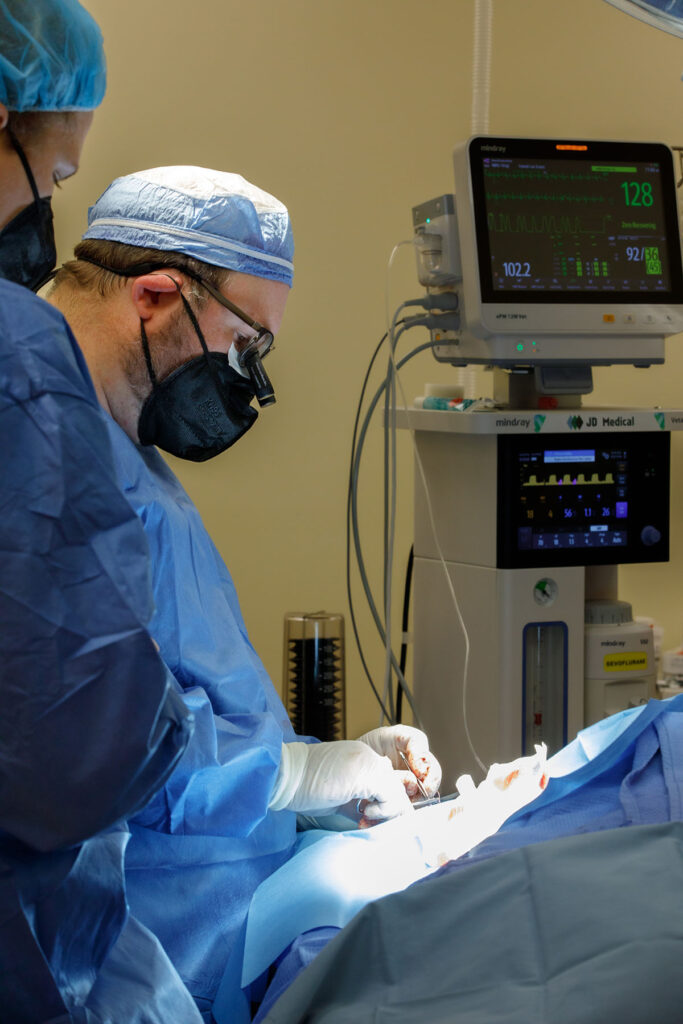
Yuki, an 8-year-old François’s langur, had “a relatively unique injury,” said Taylor Yaw, DVM, the zoo’s director of animal health, who oversaw the procedure. She sustained a dislocation at her third metacarpophalangeal joint that occurred at an abnormal age due to a previous fracture in this area, putting stress on the ligaments.
As one can imagine, langurs utilize their hands and feet extensively when navigating their habitat, so a “very intricate surgery was necessary,” Dr. Yaw said.
The zoo’s veterinarians, veterinary technicians and animal care teams have the expertise to take care of more than 39,000 animals. They have veterinary team members onsite every day of the year and are always on call for more urgent clinical cases like Yuki’s. After initially assessing Yuki’s hand, the team wanted a second opinion due to the small size of the bones and the high impact a potential surgery could have on her future for grooming, climbing and social aspects of her life.
“We wanted another set of eyes on such a sophisticated case. Being a small- to medium-sized primate, we anticipated that her anatomy would not be too different than a human pediatric case,” Dr. Yaw said. So they called in the experts at UNMC.
Dr. Morgan was excited to say yes. He’d been reading up on monkey anatomy all week. (His favorite hand anatomy textbook, and, yes, he has a favorite hand anatomy textbook, has a whole chapter on ape hands, and he’s read that book three or four times.)
He brought a team with him. Three residents, Olivia Thomas, MD, Michael Garneau, MD, and Jake Rodgers, DO, and admin Holly White.
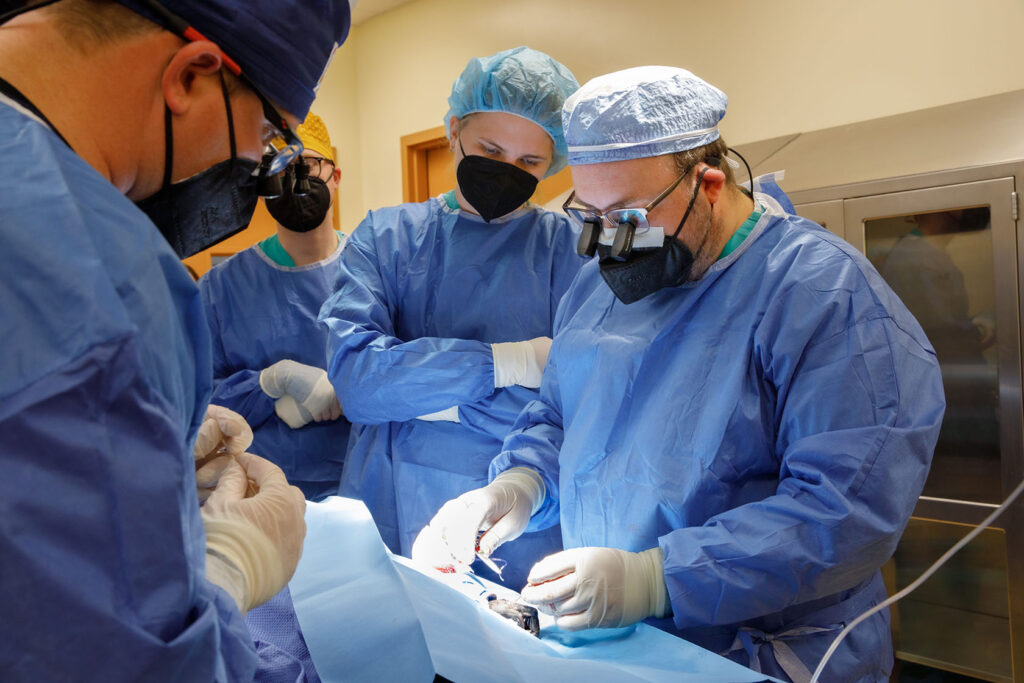
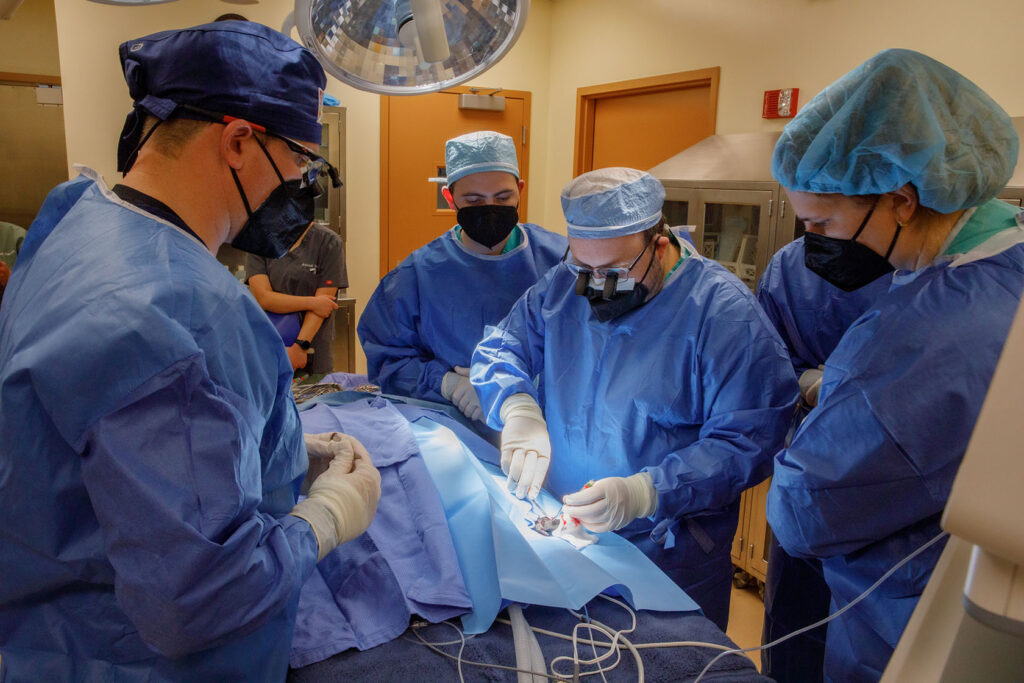
The patient came in, carried on a towel. Beautiful black fur. “Oh, Yuki!” someone said. The monitor beeped as general anesthesia was induced and the team monitored her vitals. Dr. Morgan stepped in to get his first look at the hand and after palpating it, determined that, yes, it will work.
Does Dr. Morgan get nervous before performing surgery? Depends, he said.
What about today?
“In a human, this would not be stress provoking,” he said. But he was very excited. His eyes shone.
The challenge wasn’t just the intricacy of the surgery itself, but making the fix primate-strong, so it would hold up to the patient’s active lifestyle.
“We really want to belt-and-suspenders this thing,” Dr. Morgan said, almost to himself.
The surgery was not easy at first. Medical language is very similar between human health and veterinary health, but there are some differences in medical instrument names and verbiage used. The two teams, human and veterinary, quickly assimilated in the surgical room to become Yuki’s best hope for a full recovery. Was there a tool they were looking for that was small enough for a primate hand? What would work? The metacarpal kept popping back out. Would it stay? Was this more complicated than they’d thought? “This would be tough in a human…,” Dr. Morgan said, again almost to himself. They tried again.
Then, they turned a corner.
“That looks nice, that looks really nice!” Dr. Morgan said as his UNMC residents observed their first ever opportunity to scrub into a non-human primate surgery.
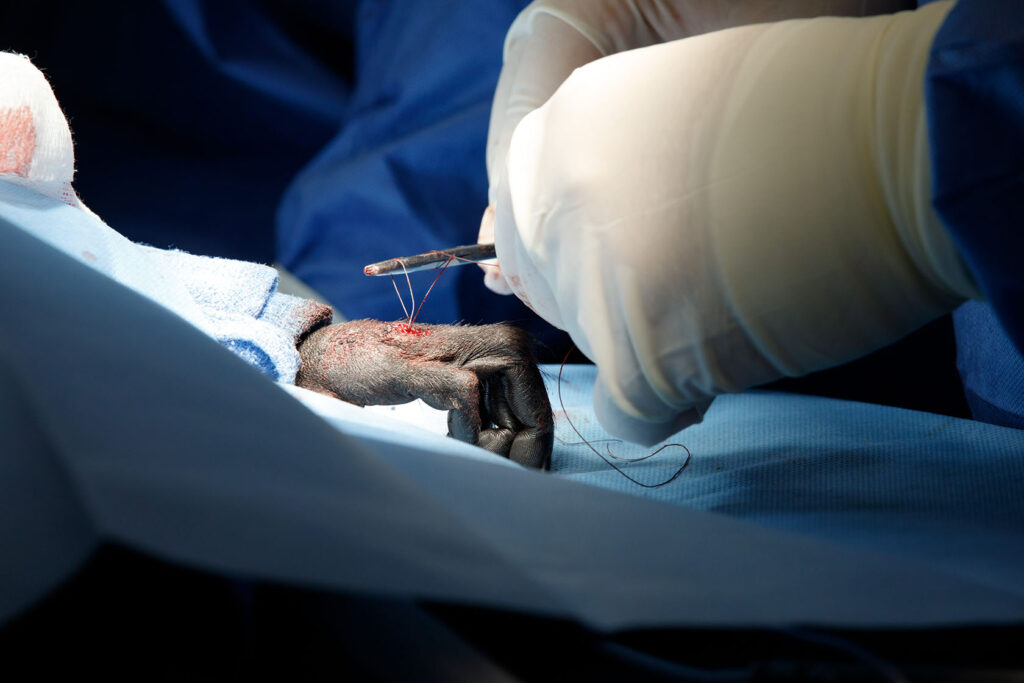
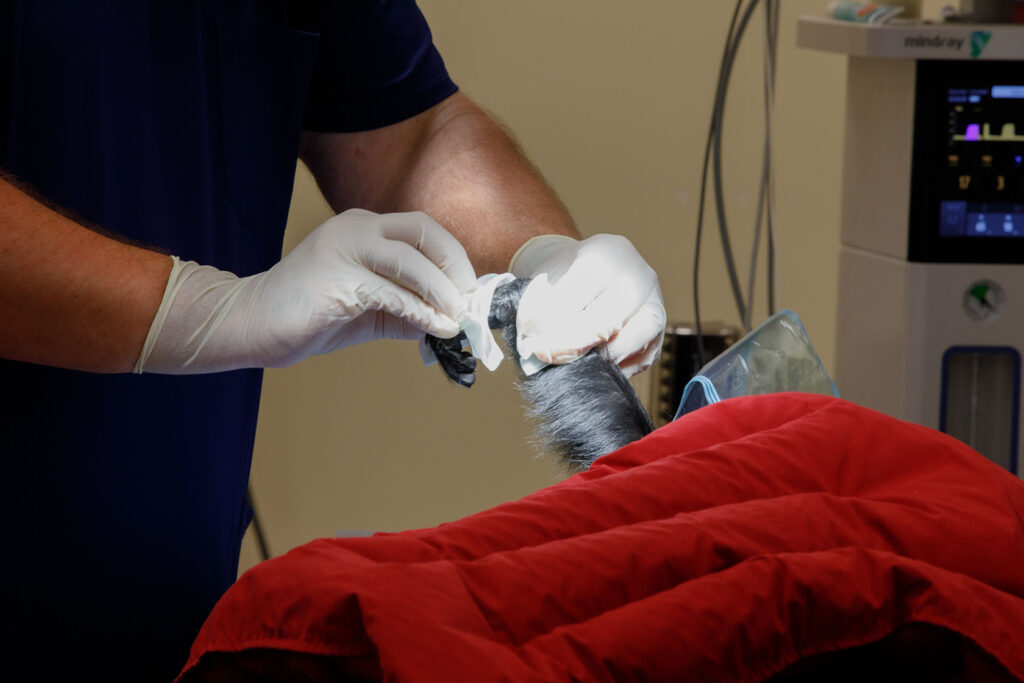
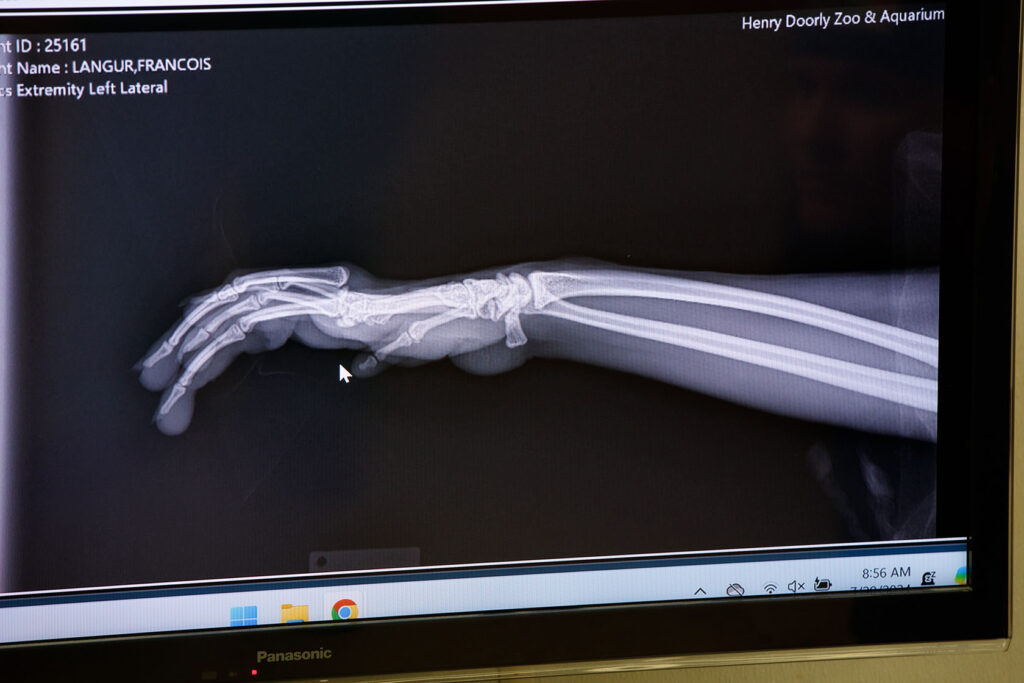
“Let’s do the ulnar side first,” Dr. Morgan said to Dr. Yaw. “The other side will be harder.”
The surgery continued. Steady now. Yes. “I think that looks pretty good,” Dr. Morgan said. “It looks great!” Dr. Yaw said. They talked as the two worked in unison.
And then Dr. Morgan got emotional (nerdy?) again about hands.
“I think about pianists, construction workers who use their hands, helping people be able to do what they want to do.
“And I think about Yuki, all the things she needs to do with these hands. Grooming. Her place in the group …”
The work was wrapping up. Then, the last stitch.
They cleaned her off and held up a tiny, furry hand for all to see. The team took post-operative x-rays, and Dr. Morgan and Dr. Yaw agreed the surgery was success.
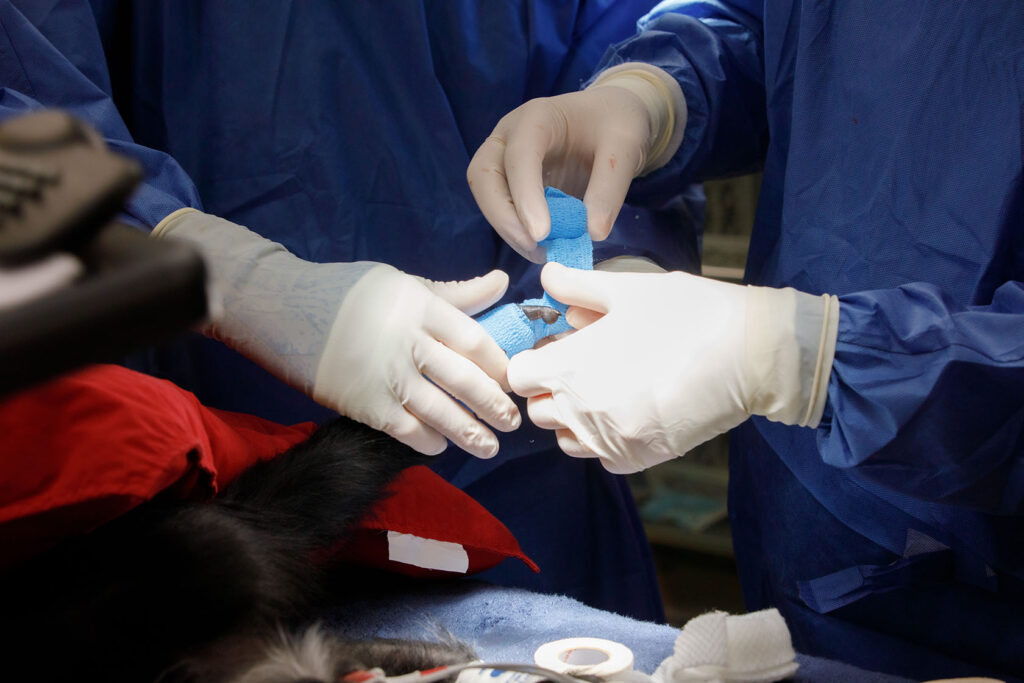
When she recovered, she would head back to the Lied Jungle to be reunited with her troop and her animal care team would take over her rehabilitation plan and medications, Dr. Yaw said. They were hopeful the fix will hold long enough to heal.
And it did. The veterinary team performed a recheck on Yuki a few weeks following the procedure and saw that the area had healed. She has regained her range of motion in her hand and can be seen swinging from branch to branch in the Lied Jungle.
And Dr. Morgan will have a story to tell his daughter when they visit the zoo, about how he assisted the veterinary team with Yuki’s hand.
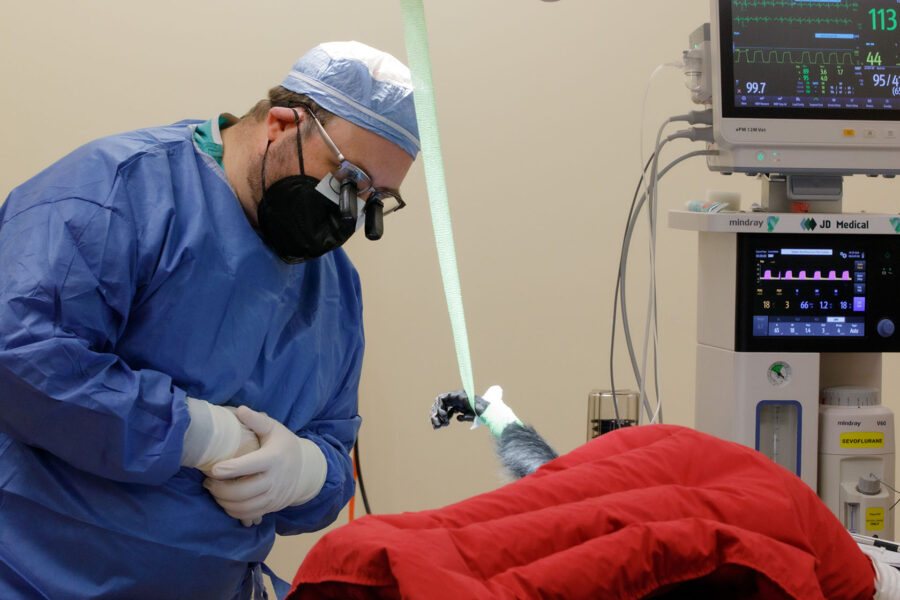
Bravo, Dr. Morgan! You are a huge asset for UNMC/NM. Thank you for all your ‘hand-i-work.’
Amazing! PERFECT!
Good job, Joe! I LOVE this story – almost as much as the one with the little girl and her teddy bear.
WooHoo for “my Dr Morgan!”……he was my favorite student forever! I was his FIRST GRADE teacher! I knew from day one that he would be something special!!!!!! Congratulations to him and his Yuki!!!!
Amazing story. If anyone can do this, Dr. Morgan can. What a blessing and how fortunate that UNMC has such an amazing surgeon! We miss you in Co, MO! Miz
I got to know Dr Morgan when he was an Ortho Resident at the univ of Missouri. He’s an outstanding physician with such great compassion for his co-workers and patients. Fantastic job with this special patient and congrats on your little girl. Miss you.
Wow! Congrats to the whole team for their innovation!
Love the nerdiness! Thank you, Dr. Morgan 🙏 What a big impact you have on one langur and the community as a whole!
He is a miracle worker! I speak from personal experience. I’m so happy to see this! Way to go doc!